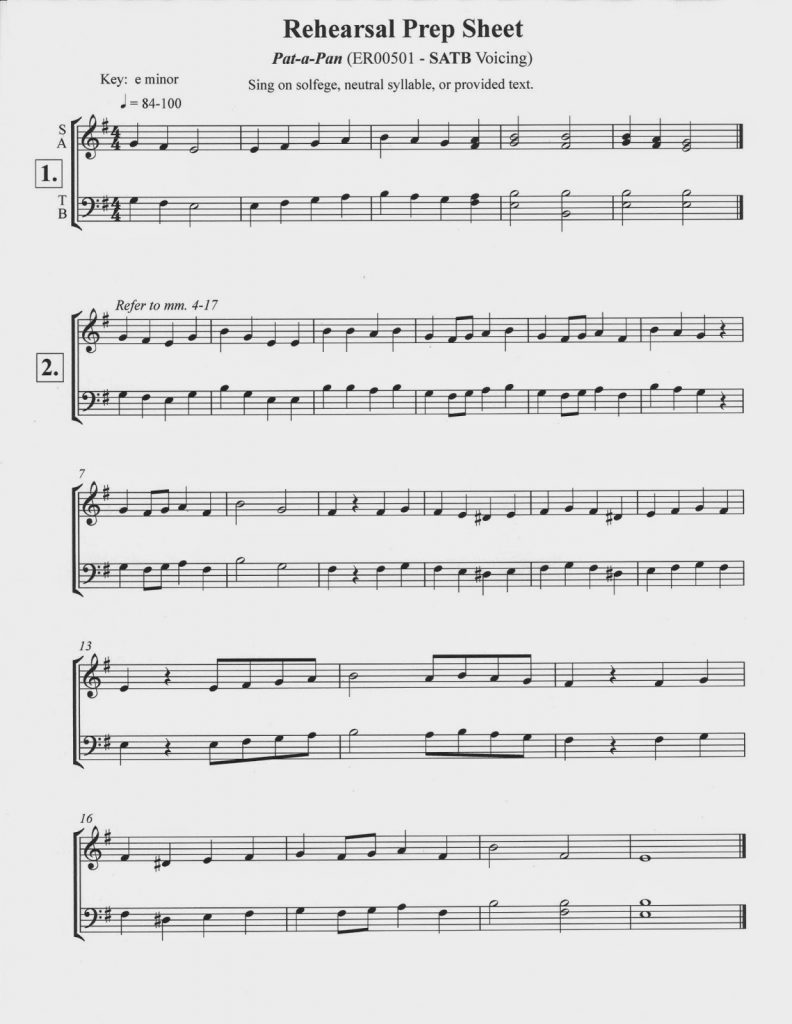Difficult Intervals: Hearing and Singing
How do we assist students in “hearing” those challenging intervals in their mind’s ear before singing? Here are a few ideas as to how students might get a “process” going in their minds. As always, we start the process with what students know…then take them to what they do not know.
For example, when creating an RPS, young singers might need a good bit of work with the corresponding scale (Example 1).
As you move through the scale, add skips, (Example 2).
Gradually work toward creating the melody, as notated on the score (Example 3).
Create simple harmonic additions, moving toward the chords as they appear on the score (Example 4).
You get it…move from simple to complex, but always move toward the score.
Take a look at this specific example:
TASK: SINGING A PERFECT 5TH (Use whatever sight-singing syllables you choose)
1) Sing the scale (Major).
2) Sing up and down (step-wise) from Tonic to the Major 3rd.
3) Sing from the Tonic to the Major 3rd.
4) Sing from the Tonic to the 5th (step-wise).
5) Repeat Step 2.
6) Sing from the Tonic to the 3rd (do they remember?).
7) Repeat Step 2 (if necessary). My experience has taught me that it is generally necessary.
8) Repeat Step 3.
9) Repeat Step 4.
10) Combine Steps 3 and 4.
11) Sing the triad (Do, Mi, Sol) – they can usually do it!
12) Singing from the Tonic to the 5th!!
The repetition gets it in the ear. It is drill, drill, drill with young singers. It is all worth it.
For older singers, you might be able to skip a few steps along the way.
Take a look at the following example: RPS for Pat-a-Pan
Because this is an SATB voicing…likely for older singers…I have skipped a few steps at the beginning.
Example 1: Notice the simple harmonies, but they are related to the actual harmonies the singers will perform. These more experienced singers are familiar with singing minor keys (maybe I am wrong on that, and I am ready to drill a bit). I am assuming there might be a bit of independence in these singers. What if I am incorrect? Well…that gives you a marvelous opportunity for creating a few more examples, huh? ALL GOOD…My goal? Get them familiar with the “sound” of e minor.
Example 2: I started with the “G”…many students have a bit of trouble transferring from major to minor keys…so…I started with the more familiar, and went immediately to the less familiar (e minor melodic movement). Then…I “played around” with e minor and how “G” figures into what the students will experience. I also provided some repetition…getting it in the ear.
Notice the drill with quarter notes (mm. 9-19) in the melodic line before going to the shorter durations (8th notes). Work gradually to the 8th notes…generally, we can only handle a couple of new ideas at a time.
Notice that there are no words in the RPS. The text does not “arrive” until later examples. The reason? We are learning pitches and rhythms, and I want students’ total attention focused in those areas. We will get to the words, but I want this piece in the ear.
Whew! This has an RPS marathon in many ways. I hope you found some helpful ideas that will help you teach students choral music in more effective ways.
Thanks for visiting my blog!!

